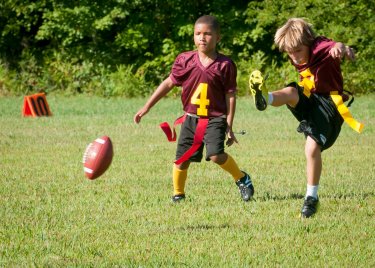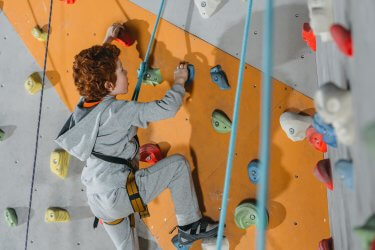To get 50 million school-aged students actively participating in physical education and physical activity by 2029, it’s vital we engage America’s youth in the planning of physical education programs. Designing challenging, relevant, and exciting learning experiences to promote student learning and interest is the key to getting young people to embrace our content. We must seek student input on activities that interest and excite them, then develop motivating experiences and teaching strategies that best facilitate their learning. Then based on this knowledge, we can choose appropriate assessments that allow teachers to effectively provide evidence of learning.
Investigating how to successfully do all these things is critical for us to move forward keeping the needs of young people at the center of our work. As teachers must do more than seek student voice into program design and activity choices; we need to seek, listen to, act upon, and then engage our students in the design process.

Young people are social, independent, have a desire to belong, feel competent, and be part of a group. Our physical and health education programs must engage them in ways that empower them to participate in and influence the direction of their own learning, gain self-confidence, self-reliance, resilience and a greater capacity to make lifelong choices. When asking young people what they have gained from actively participating in physical education and influencing their own program decisions it would be positive for them to say, “I felt my voice was heard”, “It became our program and one we want to engage in”, or “I enjoyed giving my opinion and working with my teachers to design a program that meets my needs.”
Too often today, physical education is taught through a sporting model that has its focus on team games taught through a limited set of learning experiences and teaching strategies. In the practices of some physical education teachers, physical education and sport is synonymous. Activities are mostly teacher chosen, planned, directed, and often taught year after year, at the same time, in the same way, with little emphasis on new skills or more complex applications. For some students sport is important and their choice for being physically active. But an unfortunate outcome of an overemphasis on sport is that some young people find this type of physical activity incompatible with their lifestyles and interests. If that’s what is mainly accessible to them in our programs, outside of school they are more likely to choose other types of non-physically active outlets for participation (e.g., debate, music, drawing) (Tannehill, 2013).

Physical education must be relevant, meaningful, exciting, and challenging. It must be inviting to young people and reflect their personal interests, school culture, and community resources. This suggests that we look to involve young people more intimately in the curricular and instructional design process. I’ve written previously, that when teaching a standards-based curriculum it is important to remember that standards do not dictate the content to be taught, choice of curriculum model, or the instructional practices to be employed (Lund & Tannehill, 2014; Tannehill, 2013; Tannehill, van der Mars, & MacPhail, 2014).
It’s fine for teachers to have different interpretations because their students will have different needs and interests. Dance might be hip hop for some and salsa for others. Outdoor/Adventure could be taught through in-line skating, fly fishing, or hill walking. Invasion might be field hockey, lacrosse, ultimate Frisbee, or water polo. In other words, all movement forms can be used to reach student learning goals and need to be chosen with students to help them reach their goals in the context in which they live.

During our 50 Million Strong by 2029 discussions, teachers were asked to consider such topics as: How do we involve young people both actively and authentically in their own learning? How can we move beyond engaging young people in curriculum development by merely asking for their views on the curriculum experienced? Can we share curricular and instructional decisions by working with young people on a negotiated curriculum? How might we cater for student preferences for a wider range of activities in more informal and individual and small group settings while maintaining the learning environment? Responses from teachers were varied and insightful. One small group discussion focused on just one question: How do we involve young people’s voice? Here are some of the responses:
- Students run everything at my school – assemblies, special events
- How can I engage teachers with ‘I got in the profession to teach football’ attitudes, and new teachers who truly want to make a difference?
- Standards and outcomes give us the framework to make curriculum – Give students a voice and not just accept the teacher as having the only voice
- “What are the stories behind our students?” Getting to know students is vital in building relationships
- When you actually know the student, both teacher and students have power
- How do we change the mindset of high-school students?– Generation ‘now’ thinks “I ask for it, you give it to me”
- How do you change a program when you come into a program that has been in place for years? It has taken me 4 years to make the change starting in 9thgrade and changing the culture – phased in each year until as seniors they do not know anything different
- “Invasion games” – give them choices within categories that make sense
- Take games outside the “normal” – start with a game they like such as “soccer” and then every 10 minutes change implements, disc, hockey sticks, etc.
- Photo voice projects help teachers to get to know their students
- Ask – Listen – Care
- Give students a menu to choose from but then hold them accountable for their learning
These are examples of the types of discussions teachers need to engage in. With greater understanding, teachers can more effectively include the insights and preferences of their students. Seeking student voice is about young people actively having a real say and influence over their own learning. It’s about young people working in partnership with adults and having a shared voice in all aspects of the decision-making process. By engaging students in meaningful and empowering ways, young people will begin to take ownership of their participation and learning in physical education, health, and physical activity. And in doing so make the real lifestyle behavioral changes that are vital for 50 Million Strong to succeed.
References
Tannehill, D. (2013). Physical education for all: The impact of standards and curriculum on student choice. In Symeon Dagkas and Kathy Armour. Inclusion through Youth Sport. UK: Routledge.
Tannehill, D., van der Mars, H., & MacPhail, A. (2014). Building, Delivering and Sustaining Effective Physical Education Programs.Sudbury, MA: Jones & Bartlett.
Lund, J., & Tannehill, D. (2014). Standards-Based Curriculum Development in Physical Education, 3rd Edition.Sudbury, MA: Jones & Bartlett Publishers.
